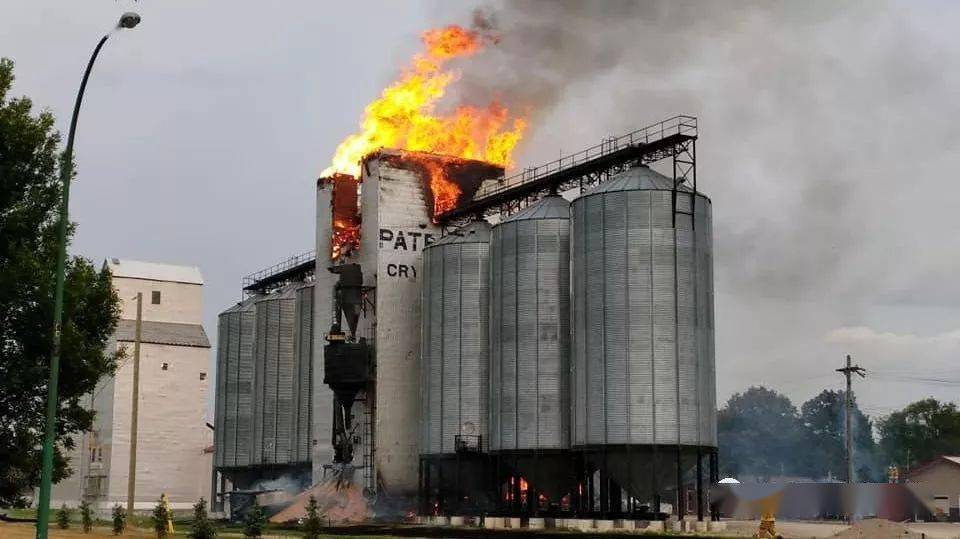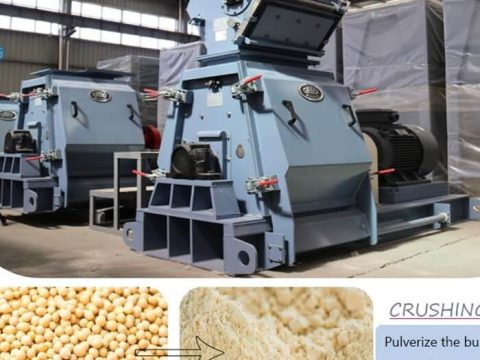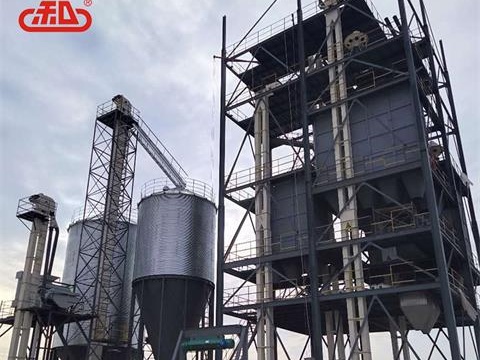Dust issues are the focus of safety production and environmental protection work in feed mills.
Many links in feed production will generate dust, such as material transportation, mixing, crushing, screening, packaging and other production links. Dust itself is non-toxic, but when mixed with air to a certain extent, it can cause a dust explosion when exposed to an open flame. If people are exposed to an environment containing a large amount of dust for a long time, it will seriously affect their health. Dust falling on equipment will affect operation, cause electrical equipment to malfunction, and cause accidents. Therefore, effective measures must be taken to control dust in feed mills. The main control work includes the layout and design of the dust removal air network system, the selection of dust collectors, and daily equipment management.
1 Arrangement of dust removal points in the dust removal system
1.1 Feeding port
Most of the raw materials in the feed factory are poured into the feed opening manually, and a large amount of dust is easily generated during the feeding process. Therefore, a separate pulse dust collector can be installed at each feeding opening and placed directly at the feeding opening. Dust cover. In this way, it can be used not only for feeding dust, but also for suctioning the base of each feeding elevator, realizing feeding, dust removal and recycling at the same time.
1.2 At the crusher
If mechanical discharging is used at the pulverizer, a pulse dust collector can be installed at the reverse end of the discharging auger to have both dust removal and air suction functions. Pay attention to closing the air at the auger outlet during installation to prevent air leakage. The inlet of the crusher can have a second entry to ensure that the crusher has enough air volume to pass through the crushing chamber when crushing at different holes. It also solves the problem of clogging of the air closer and improves the reliability of the system. This method is also suitable for the current renovation project of the poor pulverizer auxiliary material suction system process in feed factories.
1.3 Addition of small ingredients
Because the amount of small ingredients is small, they need to be added separately in the mixer. Due to the fine particle size of this part of the material, even though the quantity is small, it is still easy to cause dust to fly. For small feed mills, a dust removal point can be set up here; for large and medium-sized feed mills, a small dust collector can be set up. This can not only avoid cross-contamination in the combined air net, but also allow the sucked powder to be returned directly to the mixer, preventing the loss of small materials, thereby effectively ensuring the quality of the feed.
1.4 Silo group location
Various silos in large and medium-sized feed plants are relatively tall, causing dust to fly when materials enter the silo. Negative pressure facilities should be installed to handle them. For a group of combined silos, it is impossible to install a vacuum cleaner in each silo. The selection of dust suction points should be specific based on the location, but connectivity should be achieved at the upper part of each silo. The dust collection points set up collect the rising dust from each bin through the upper space. The general method is to set up one point in the warehouse to be crushed, two points in the batching warehouse, one point in the warehouse to be granulated, and one point in the finished product warehouse, and combine them into their respective dust removal air nets. The air suction volume can be determined according to the size of the bin. Determine, then configure the appropriate pulse dust collector.

1.5 Bucket elevator
In machine structures below the 10,000-ton level, air suction is generally carried out at the machine head, that is, the discharge area, to prevent dust from flying. For large and high lifts, simultaneous air suction at the feeding and unloading locations should be used, and combined air nets should be incorporated to reduce the length of the air net and reduce resistance along the way. The specific design can be handled separately, that is, the suction air of the machine head can be combined in the centralized network, and the suction air of the machine base can enter the adjacent dividing device respectively.
1.6 Elsewhere
At the raw material cleaning, cooler and finished product packaging areas, air suction points should also be designed as needed and incorporated into the combined air network.
2.1 Each dust suction point should reach a certain air suction volume and wind speed. The air suction volume is constant. The larger the suction port, the smaller the wind. The smaller the suction port, the greater the wind speed. There is a range for the air volume and wind speed required for each specific vacuuming point. Minimize the air volume and wind speed while satisfying the dust control to save energy consumption and prevent the formation of a vacuum in the room. For example, at the crusher, the suitable air suction volume is 2300~2800m.3/h and the wind speed is 2.5m/s. However, for a specific process design and equipment layout, it is difficult to calculate the equipment resistance and air suction resistance, as well as the air suction volume and wind speed. Therefore, a control valve needs to be installed at the appropriate position of each air suction inlet pipe.
2.2 Pipeline layout
Generally speaking, every feed processing workshop has a central dust collector, and some dust removal points are relatively far away. If the process route is relatively long, the air duct should be laid vertically as much as possible to reduce the number of curved and horizontal pipe sections and shorten the length of horizontal pipe sections to prevent dust accumulation in the pipeline from clogging. The interface of the pipeline should prevent air leakage.
2.3 Setting up independent wind network
For high-concentration trace components, an independent air net should be used. Its air suction and dust reduction materials should not be added directly to the compound feed, but should be diluted and added in a small proportion.
2.4 Suction port layout
The suction nozzle of the vacuum cleaner should be facing the place where the most dust is generated, and the suction direction should be as consistent as possible with the movement direction of dust-laden air. However, in order to prevent too much material from being pumped out, the suction port should not be located near the area where the material is in a state of agitation, or in the center of the air flow of the powder. The contraction angle of the suction hood is generally not greater than 600 to ensure uniform air flow in the hood.
In the same feed factory, the selected models of dust removal equipment should not be too many and should be as consistent as possible. At present, there are many specifications of dust removal equipment produced in our country. The commonly used ones are a series of pulse dust collectors and mechanical vibration dust collectors. Their process layout is flexible, they occupy a small area, and they have a large filtration area (more than 90%). At the same time, the box can be disassembled. It is easy to replace the cloth bag. The fan is integrated with the pulse dust collector, which shortens the wind dust removal. The TDF type high-pressure electric valve can be used, which increases the air release volume and has good dust removal effect. The air inlet is placed on the ash hopper to avoid dust inclusion. The dust in the air should be cleaned regularly, and the damage of the filter bag should be checked regularly. Check whether doors and air ducts are tightly connected while working. When using the pulse dust collector, start the air compressor first, and then start the fan after the pressure in the air bag reaches 0.5~0.7MPa. The internal pulse valve membrane needs to be cleaned regularly. The shutdown sequence is to stop the fan first, then the air compressor or vibration motor to keep the filter bag clean after each shutdown. For dust settled in the workshop and on machines, a better method is to use a dust cleaning system to clean it to prevent secondary dust formation.
4 Summary At present, the dust removal air net systems in domestic feed plants are quite different, ranging from complex to simple, and the effects are also different. Some effects are not good due to various reasons, such as improper combination of dust removal air nets, resulting in unstable system conditions; improper selection of equipment, resulting in ineffective vacuuming; poor maintenance; improper parameter selection, and failure of system balance calculations, resulting in some The wind power of the air ducts is insufficient, while the wind speed of other air ducts is too high, resulting in material suction.

After purchasing a good feed grinder, if it is not used correctly, it will not only shorten the service life of the feed grinder, but also affect the work efficiency, resulting in half the result with twice the effort.

14 containers, for a period of one week, double 520 pellet Feed Production Line, loading and shipping in the factory area.